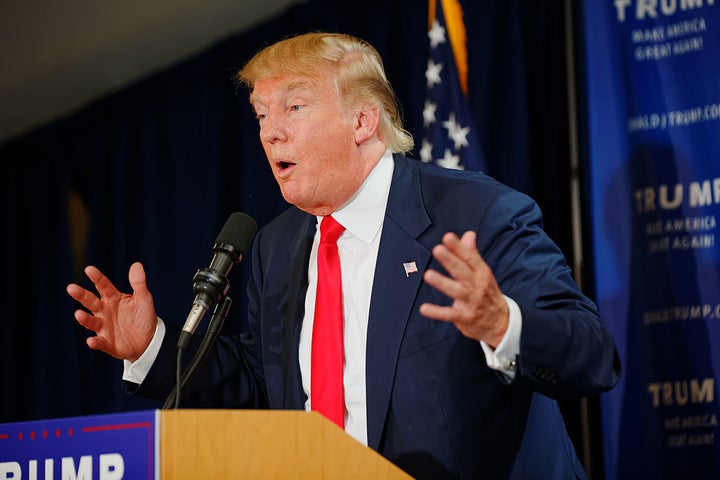
One and done.
That phrase normally refers to college athletes leaving school after a year, but it also accurately describes what the American people want when it comes to Trumpism. Make no mistake, Trumpism was on the ballot last Tuesday. Establishment Republicans running statewide in Virginia and New Jersey openly embraced the hate-filled rhetoric of their party’s leader—despite the pathetic attempt by Mr. 46 percent of the popular vote himself to deny it in the case of Ed Gillespie, a candidate who got the trouncing he so richly deserved.
Unsurprisingly, the Trump forces stuck to their proverbial guns even after the election.
Despite the coda about “federal employees,” there’s no question what Always-Trumper Jerry Falwell Jr. meant when he excluded liberal, diverse Northern Virginia from the category of “Virginians.” He didn’t even need to put the word “real” in front of “Virginians” for that racist dog whistle to be heard.
The resistance to Trump made itself heard most loudly in the place where a white nationalist terrorist struck down anti-racist protestor Heather Heyer last summer. The resistance was certainly motivated by Trump’s open courting of those white nationalists, seen in repeated statements he made in the days after her murder. Whereas overall voter turnout in Virginia increased by 16 percent over the previous election for governor four years earlier, turnout in Charlottesville surged by 31 percent—almost twice as much. And 84 percent of the Charlottesville vote went to Democrat Ralph Northam. It was a small measure of justice.
GOP gubernatorial candidates weren’t the only Republicans who hugged hate hard in this year’s campaign. America’s Voice gathered a collection of some of the worst images to show just how extensively they did so. It’s not pleasant to look at these revolting examples of race-baiting. Doing so makes me want to scream. But here’s what makes me smile and pump my fist: the morning after the election, America’s Voice updated their post: “Every single Democrat below who was the target of a hate-based ad has won. The lesson of 2017 — racism doesn’t pay.”
While the lesson of 2017 is clear, we lack definitive proof about the meaning of 2016. There’s no evidence that Trumpian racism actually gained him votes in the general election (in the Republican primary, however, there’s no question that he’d never have won without it). Remember, he won the white vote last November by essentially the same margin as Mitt Romney did four years earlier (21 percent vs. 20 percent), while doing 2 percent better than Romney in terms of overall margin. Thus, Trump underperformed among white voters compared to his overall performance relative to Romney. These numbers suggests that, at best, Trump’s racism cost him about the same number of votes among better-educated and upper-income whites as his racism gained him among less-educated and lower-income whites.
Taking the wrong lesson from 2016, however, Republicans thought Trumpian racism would help them this year. Seeing Americans all over the country rise up and defeat them has left me feeling better about our country’s future than I have in, well, just about exactly one year. Racism remains a central facet of American life, but so does the resistance to it. As I’ve written before, just as the election of Obama did not mean the end of racism, neither did the election of Trump mean its permanent triumph.
Looking to the future, the Democratic Party cannot, and must not, prioritize either “diversity” or “progressive economic issues.” It has to stand up and fight for both. This past election makes clear that doing so leads to victory. Here’s Sarah Jones, writing in the New Republic:
Tuesday’s results prove what leftists have long insisted: There is no real divide separating progressive populism from identity politics. A party that embraces one should embrace the other. Only then will it truly be the party of the people.
Donald Trump can do a tremendous amount of damage to our country over the next three-plus years. He can start by getting his billionaire’s tax cut through Congress, a plan that sends money from middle-class households up the chain to those at the very top, and busts the budget at the same time—thus, he’ll say, making it necessary to cut spending that benefits Americans at or below the median income level. After winning at the ballot box last week, we need to redouble our efforts to defeat the Trump tax plan in the weeks ahead.
Furthermore, there’s no doubt that Trump will continue to race-bait all throughout his presidency. Even though his constituency of older, white conservatives is not the future of America, neither is demographic change coming fast enough to take anything for granted in terms of elections. Should we take heart in his historically low approval rating? Sure. Do we love seeing him losing by 10 points to a generic Democrat in a new presidential poll, or seeing that 63 percent of Americans think he doesn’t deserve re-election in 2020? Of course. But we’ve got to stay focused, and stay motivated.
Defeating Trumpism on Election Day 2017 felt great. Beating Trumpism in Alabama next month would be amazing. Retaking the House and the Senate next year would be even better, as that would prevent Trump from making wholesale changes to our laws and our judiciary. Then comes 2020. This past Tuesday is, I dearly hope, the beginning of the rejection of Trumpism, of a hate-filled politics that should disgust every American. Let’s make sure that it is.
